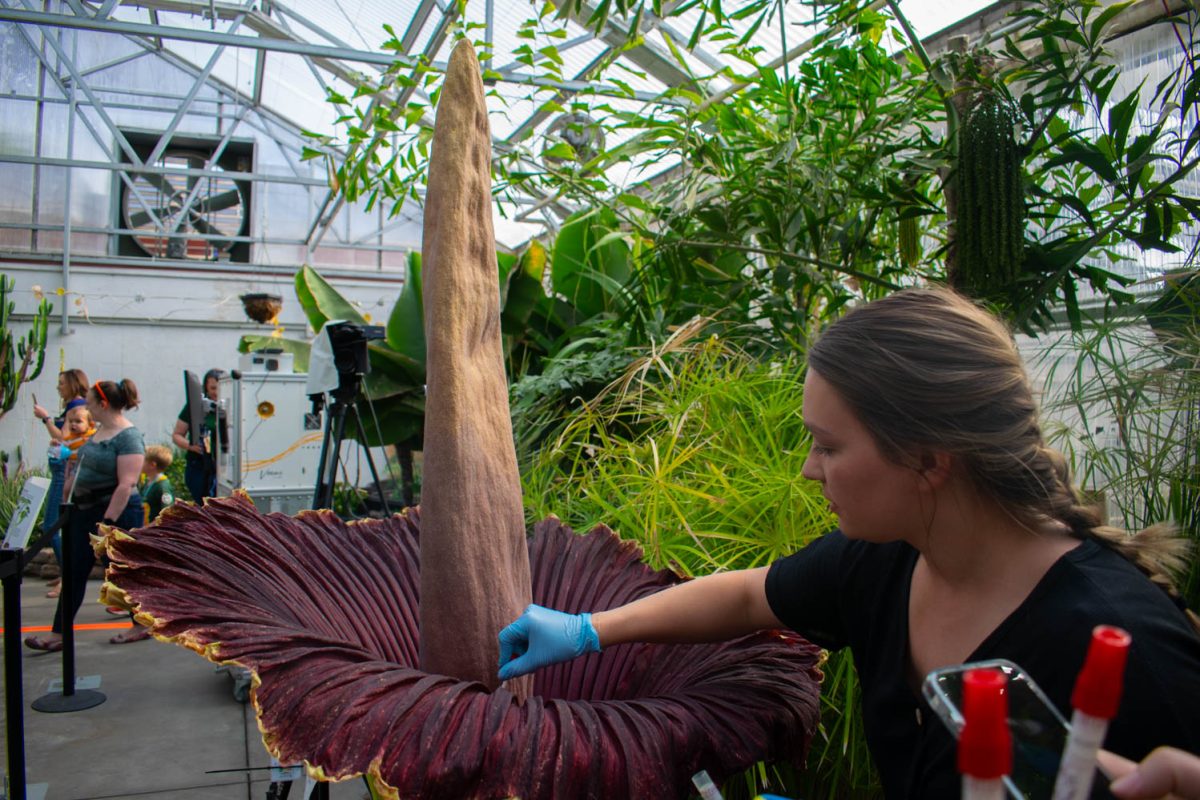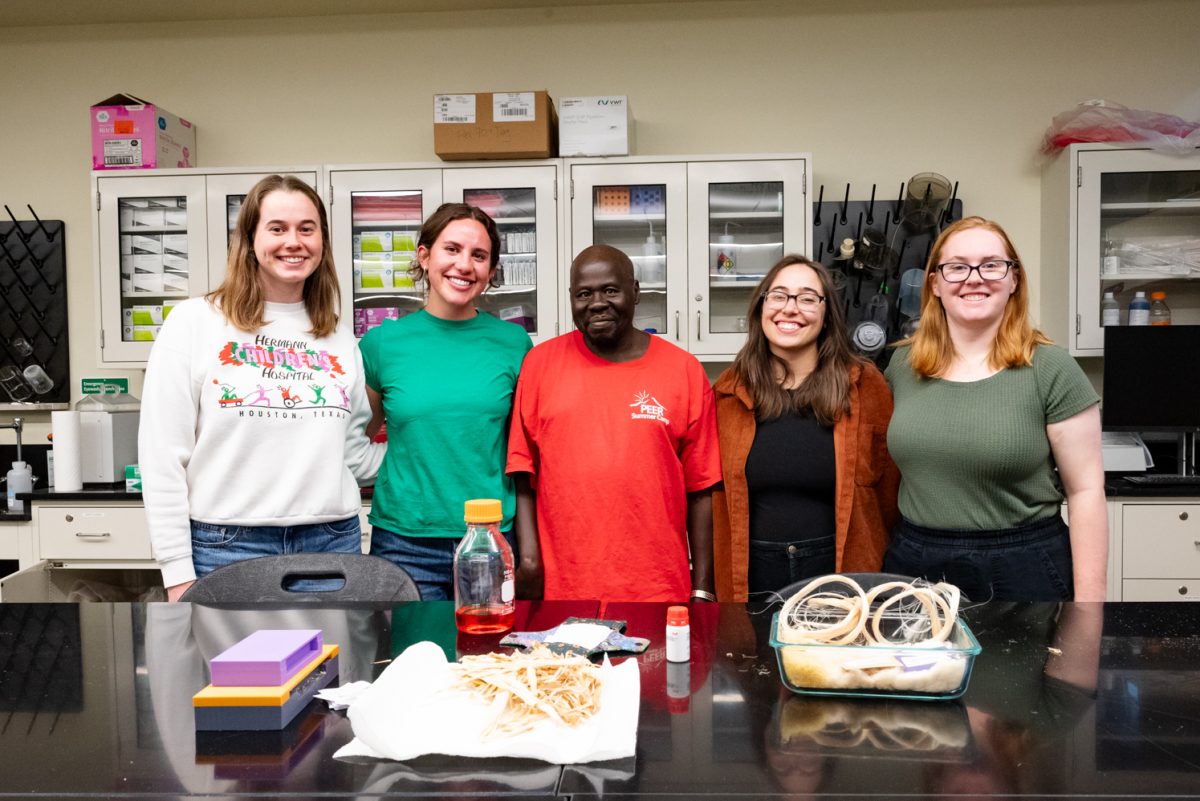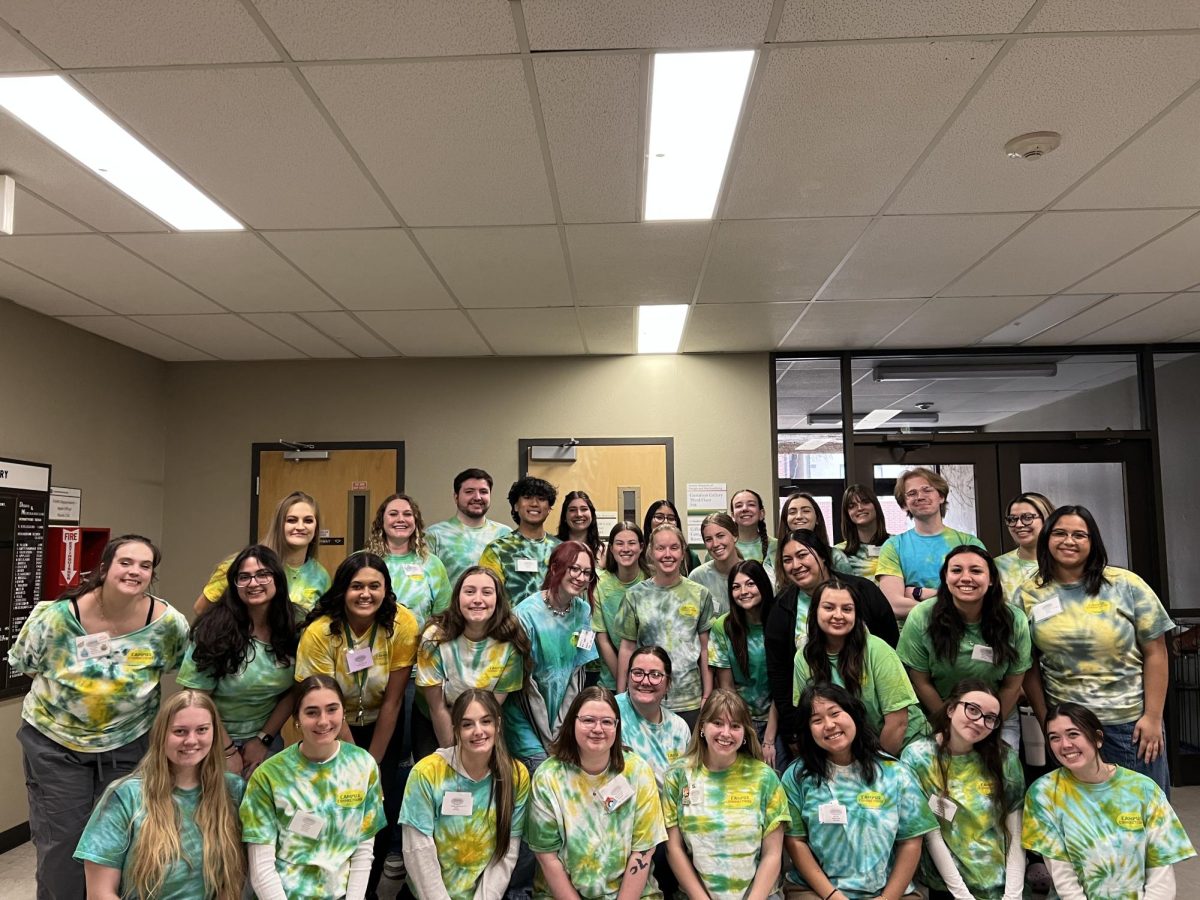Normally, people run from the smell of rotting flesh, but this Memorial Day weekend had an unprecedented number of Fort Collins community members seeking out the smell.
With a long line quickly spreading around Colorado State University’s Plant Growth Facilities conservatory, it was clear that word spread quickly about the largest addition to the Plant Growth Facilities: Cosmo the corpse flower.
The 5-foot-tall Amorphophallus titanum, popularly known as the corpse flower, had officially bloomed.
“There’s only about 1,000 left in the world on native lands,” said Tammy Brenner, CSU PGF manager and the person who brought Cosmo to Fort Collins. “The reason there’s so few left is mainly due to deforestation, but I think the other reason is because it takes eight years to grow.”
Brenner acquired Cosmo and one other corpse flower in 2016 during a plant swap at a conference at Cornell University.
“We had a plant swap the year that Cosmo and one other (corpse) flower were there, and we took two of them,” Brenner said. “Cosmo was the only one that survived (the trip), so we took him on a plane from Cornell to here.”
The smell that permeated throughout the conservatory Sunday, May 26, is why Cosmo is informally known as the corpse flower. The organic compounds dimethyl trisulfide and trimethylamine give the flower its infamous rotting corpse scent and are a focal point of the research CSU is doing on the flower.
“We’re interested to see if there is a difference in the phyllosphere of this plant,” said Valerie Seitz, a postdoctoral fellow in Associate Professor Jessica Metcalf’s research lab for the department of animal sciences. “There’s a lot of different inner and outer folds both inside and outside the leaf, and there are different plant organs that we’re interested to see if there are microbial differences between these different organs and if that is potentially contributing to some of the smells that we’re receiving.”
Cosmo’s presence at CSU has led experts to find that little research has been done on the Amorphophallus titanum.
“I do feel like it’s an underresearched organism because it is so rare,” Seitz said. “Everyone’s trying to get in on it. There’s some really interesting evolutionary links, like, why did this plant evolve to produce these smells that are usually associated with rotting flesh? What kind of evolutionary strength is that for the plant? I think that’s a really interesting avenue that researchers are going down.”
While these evolutionary quirks provide an interesting experience for modern-day humans, they are a reproductive disadvantage for the corpse flower and a part of the reason there are so few left in the wild. The corpse flower, native to Sumatra, Indonesia, is slowly dying out, in part because of deforestation but also due to an inefficient reproduction process.
“The corpse flower needs another plant in its area to grow and produce seed pollen at the same time,” Brenner said. “So evolutionary-wise, (the corpse flower) didn’t really set up its program for population very well because you need to have two flowers bloom at the same time once every seven to eight years.”
Now that Cosmo has completed the first bloom of its life, the cycle between each bloom should be relatively shorter.
“I think the time span between each bloom will be shorter now that Cosmo has the first one out of the way,” Brenner said. “Blooms should be happening every two to three years now instead of eight.”
At the peak of the day, people from across Colorado traveled to see the bloom. Despite the hundreds of people who visited the facility, researchers still took swabs and conducted surveys, one of which investigated the heat the corpse flower generates during the blooming process.
“Because this flower grows so quickly in such a short period of time, it produces a lot of heat, which is something we want to explore,” Brenner said. “The base of the plant can get up to around 90 degrees during its largest growth spurts. The most I saw it grow was almost 6 inches in one night — that’s how we knew it was about to bloom because the growth started slowing down.”
The general public is able to view Cosmo between 9 a.m. and 3 p.m. each day the flower is in bloom at the PGF conservatory.
“I just heard about it on Facebook and just thought it would be really interesting,” said Michelle Baum, a member of the Fort Collins community. “I’d give it a 10 out of 10.”
Reach Emma Askren at science@collegian.com or on Twitter @emma_askren.









